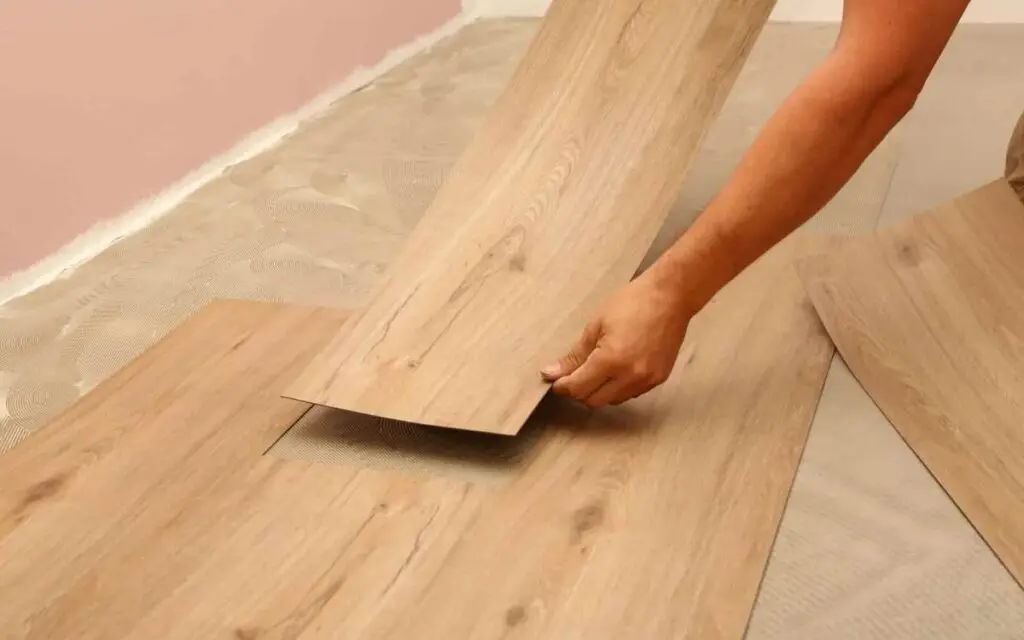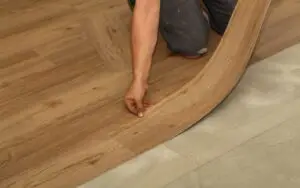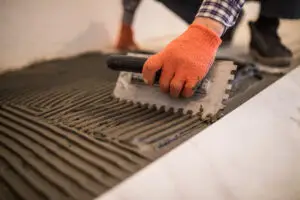Does Vinyl Plank Flooring Need to Be Glued Down? Pros & Expert Tips
Types of Vinyl Plank Flooring Installation
Vinyl plank flooring offers flexibility in installation methods, primarily glue-down and floating. Each method has its unique benefits, making it essential to understand their differences before starting your project.
Glue-Down Vinyl Plank Flooring
The glue-down method involves adhering vinyl planks directly to the subfloor using specialized adhesives. This creates a secure, permanent bond ideal for high-traffic areas or commercial spaces.
Advantages:
- Increased stability and durability.
- Resistant to shifting or lifting over time.
- Performs well in moisture-prone environments.
Disadvantages:
- Requires meticulous subfloor preparation.
- Difficult to replace individual planks.
- Time-intensive and best handled by professionals.
Floating Vinyl Plank Flooring
Floating floors rely on an interlocking system where planks snap together without adhesive. They “float” over the subfloor and can include an underlayment for added support.
Key Differences from Glue-Down Flooring:
- Faster and easier installation.
- Suitable for DIY enthusiasts.
- More forgiving on uneven subfloors with proper underlayment.
Factors to Consider When Choosing an Installation Method
Room Type and Traffic Level
Glue-down installations are perfect for areas with heavy foot traffic or rolling loads, such as offices and kitchens. Floating floors work well in low-traffic zones like bedrooms.
Subfloor Condition
A smooth, clean, and level subfloor is critical. Glue-down flooring requires precise preparation, while floating systems can accommodate slight irregularities.
Durability and Longevity
Glue-down floors often outlast floating floors due to their sturdy adherence, especially in humid or high-traffic spaces. However, floating floors are easier to repair if a plank is damaged.
Tools and Materials Needed for Installation
Glue-Down Installation Tools
- Vinyl flooring adhesive.
- Notched trowel for even adhesive application.
- Flooring roller to ensure proper bonding.
Floating Installation Tools
- Underlayment material.
- Tape measure and precision cutting tools.
- Rubber mallet for securing planks.
Step-by-Step Overview of Each Installation Method
How to Install Glue-Down Vinyl Plank Flooring
- Subfloor Preparation: Clean and level the surface.
- Adhesive Application: Spread adhesive evenly with a notched trowel.
- Plank Placement: Lay planks carefully, ensuring alignment.
- Press and Secure: Use a flooring roller to press the planks firmly into place.
How to Install Floating Vinyl Plank Flooring
- Underlayment Installation: Lay underlayment over the subfloor for cushioning.
- Plank Alignment: Begin at a corner and align the planks.
- Snap Together: Connect the planks using the interlocking edges.
- Trim and Finish: Cut planks as needed and install baseboards for a finished look.
Common Mistakes to Avoid During Installation
- Skipping Subfloor Prep: Adhesion issues or uneven flooring can occur.
- Using Incorrect Adhesive: Leads to improper bonding or plank shifting.
- Misaligning Planks: Particularly in floating floors, this affects the overall aesthetic.
Comparing Glue-Down vs Floating Vinyl Plank Flooring
Cost Comparison
Glue-down floors require more adhesive and preparation, raising costs. Floating floors are generally cheaper and quicker to install.
Maintenance and Repairs
Floating floors make replacing damaged planks simpler, while glue-down systems may require more extensive work.
Long-Term Performance
Glue-down flooring excels in durability, particularly in demanding environments, but floating floors offer versatility and ease of installation.
DIY Vinyl Plank Flooring Installation: Is It Worth It?
While DIY installation may seem cost-effective, it comes with challenges:
- Precision is key to avoid gaps or misalignment.
- Subfloor preparation can be time-consuming.
- Mistakes can compromise the floor’s longevity.
Why Hire a Professional for Vinyl Plank Installation?
Professionals bring expertise and specialized tools, ensuring a flawless finish. Benefits include:
- Avoiding costly installation errors.
- Guaranteed adherence to manufacturer warranties.
- Efficient handling of subfloor issues.
FAQs
What is the best type of vinyl plank flooring installation for high-traffic areas?
Glue-down installation provides superior stability and durability for high-traffic spaces.
Can I install vinyl plank flooring over an uneven subfloor?
No, the subfloor must be leveled to ensure proper installation, regardless of the method used.
How long does glue-down vinyl plank flooring take to dry?
Adhesive typically cures within 24-48 hours, depending on the product used.
Do floating vinyl floors need an underlayment?
Yes, underlayment provides cushioning, noise reduction, and moisture protection.
Is professional installation better than DIY for vinyl planks?
Yes, professionals ensure a perfect, long-lasting result, saving time and avoiding mistakes.
FAQs & Answers
Glue-down installation is ideal for stability and durability in high-traffic spaces.
No, the subfloor must be smooth and level for either installation method.
It typically takes 24-48 hours for the adhesive to fully cure.
Yes, underlayment is often required for added cushioning and noise reduction.
Yes, professionals ensure a flawless, long-lasting result and minimize installation errors.





